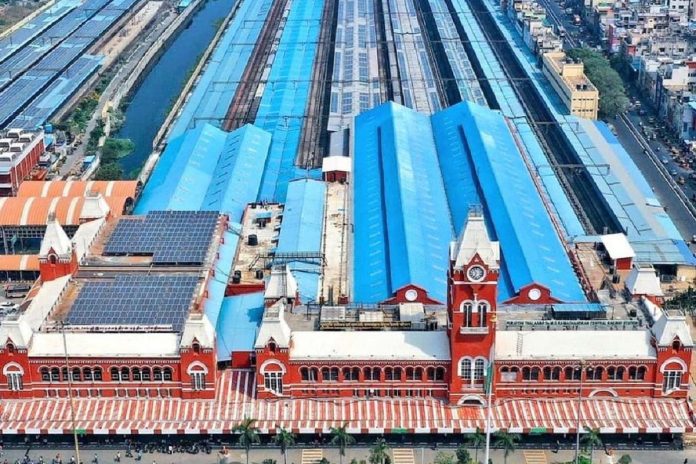From 2014 to 2023, a total of 200.31 megawatts of solar power was commissioned.
The Indian Railways is making great progress towards its Net Zero Mission, aiming to make the entire railway network in India environmentally sustainable and reduce its carbon footprint to zero.
According to recent data from the Ministry of Indian Railways, the capacity of the railways to harness solar power has increased 54 times in the past nine years. This is particularly impressive considering the vast area covered by the railway network.
The growth in the Indian Railways’ solar power capacity has been remarkable. From 2014 to 2023, a total of 200.31 megawatts of solar power was commissioned.
These numbers clearly demonstrate the rapid expansion and successful implementation of solar power in the railway sector.
Key components of the Indian Railways’ Net Zero Carbon Emission:
The mission includes the electrification of the rail network to replace diesel locomotives with electric ones. Electrification not only reduces carbon emissions but also lowers operating costs and is more environmentally friendly.
Indian Railways plans to generate a significant portion of its energy needs from renewable sources such as solar and wind. This initiative involves installing solar panels at railway stations and utilising wind energy to power trains.
Improving energy efficiency across the railway network is another important aspect of the mission. This includes implementing energy-efficient technologies, better resource management, and adopting eco-friendly practices.
The mission also focuses on the development of ‘green stations’ with environmentally friendly features. These features include rainwater harvesting, waste recycling, and sustainable landscaping, as per the Financial Express report.
Indian Railways has taken steps to reduce pollution from human waste by implementing bio-toilets in trains and stations.


